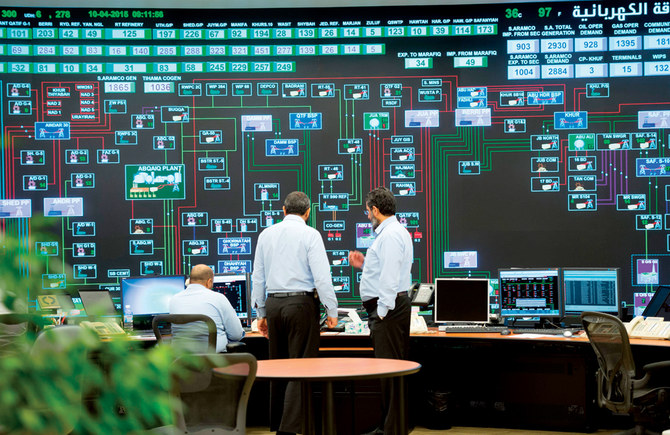
- ARAB NEWS
- 12 Jul 2025

Frank Kane
DUBAI: The prospectus for the initial public offering (IPO) of Saudi Aramco gives a detailed snapshot-in-time of the most profitable company in history and the biggest oil company in the world, against the backdrop of a challenging global economic and energy situation.
The 658 pages of information, statistics and graphics are a treasure trove of data for potential investors in what promises to be the biggest-ever IPO, as well as essential reading for analysts of the crucial global energy market.
On the world outlook for the crude oil industry, the prospectus paints a more optimistic picture of future demand than many recent projections.
“Global demand for crude oil is expected to continue growing, with global GDP growth being a key driver,” the prospectus said, on the advice of its industrial consultant, Washington-based IHS Markit.
It sees real compound growth in the gross domestic product (GDP) at 2.9 percent in the 13 years to 2030, down from 3.2 percent in the decade of recovery after the global financial crisis, but still a healthy figure in a world challenged by trade and geopolitical tensions.
In Asia, outside Japan, the growth rate is even more impressive, at 5.2 percent in the next 12 years.
“Global crude oil demand is expected to grow at 0.8 percent from 2018 to 2030. Growth in demand from the non-OECD Asia Pacific and other developing countries is expected to help mitigate any reduction in demand for crude oil caused by the increasing availability of alternative energy sources,” the prospectus added.
The downstream side of the business, which Aramco has highlighted as a strategic priority area, will also witness steady expansion. Demand for refined products will average 0.8 percent until 2030, with a surge in global requirement for ethylene, especially from China and North America.
In Saudi Arabia, the big area for growth will come in demand for natural gas, another key area of Aramco’s future strategy as the Kingdom moves away from oil as a power-generation fuel. Demand for gas will increase by 3.6 percent annually until 2030, the prospectus said, “primarily due to an increase in demand from the power generation and the refining and industrial sectors.”
Aramco is also a growing force in the global refining industry. With a gross refining capacity of 4.9 million barrels of oil per day, it ranked as the fourth-largest integrated refiner in the world, and the strategy of integrating upstream and downstream activities means it can secure crude demand by selling its dedicated refining activities to global trade partners. Refining capacity in the Kingdom accounts for 62 percent of net refining capacity.

In terms of sheer size, the prospectus confirms that Aramco is a giant of the corporate oil industry. In the first six months of 2019, when production was limited by the agreement with non-OPEC oil producers, it produced 13.6 million barrels of oil equivalent per day, including around 10.3 million barrels of crude.
Between 2016 and 2018, Aramco pumped roughly one in every eight barrels of oil produced in the world each day.
That output helped it become by far the biggest profit earner in the corporate world. Last year’s profits of $111 billion were higher than the biggest listed companies such as Apple and Google, which are valued at significantly less than any of the values suggested by bankers’ range of estimated valuations for Aramco.
By the measure of cash generation, too, Aramco is way above its peer group in the oil industry. In the first six months of this year, Aramco threw off more than $52 billion of net cash from operating activities and $38 billion of free cash flow. It has low borrowings, having only earlier this year entered the global debt markets with its record-breaking $12 billion bond.
Analysts say the one particular financial strength that should command a premium on valuation is the sustainable free cash flow Aramco can generate. Unlike independent oil markets peers — Exxon Mobil, Chevron, BP and Shell, for example — Aramco does not have to spend considerable amounts of capital each 10 to 15 years on replacing its oil reserves.
All the sustainable free cash flow it generates — as much as $120 billion per year — can be reinvested into growth areas, research and development, and to help pay the dividend set at minimum of $75 billion for IPO investors.
The reason it does not have to set money on reserve generation lies in the huge reserves on which the Kingdom is sitting. At the end of last year, Aramco’s proven reserves, audited by Texas firm DeGolyer & MacNaughton, were more than the five big independent oil companies combined. At 336.2 billion barrels of oil equivalent, including 261.5 billion of crude, Aramco’s reserves include the biggest single onshore and offshore oil fields in the world.
Under a 2017 concession agreement between Aramco and the Saudi government, the company has the right to exclusively explore, develop and produce those reserves for a period of 40 years, which can be extended for 20-year periods thereafter.